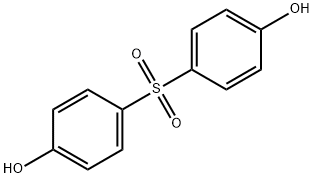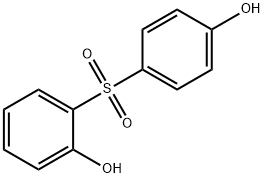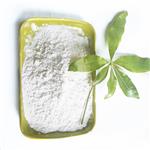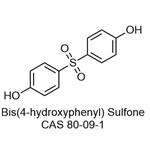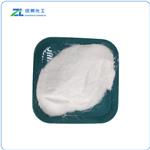Description
Bisphenol S, also known as 4,4'-Sulfonyldiphenol, abbreviated as BPS, is a synthetic bisphenol (BP) compound. It was originally used as a safe alternative to bisphenol A and is present in many household products, including food packaging, beverage containers, lotions, toys, plastic PVC floors and water pipes
[1]. However, current studies have found that BPS does not seem to be very safe and may damage the function of melanocytes
[2]. Higher BPS exposure is also associated with increased serum uric acid concentrations, and this association is more obvious in boys, which poses certain health hazards
[3].
Chemical Properties
White needle-like crystals. Freely soluble in aliphatic hydrocarbons, soluble in alcohols and ethers, slightly soluble in aromatics, insoluble in water. Bisphenol S molecule contains two hydroxyl groups and a strong electron-absorbing sulfone group, so the acidity is stronger than other phenols.
Uses
Bis(4-hydroxyphenyl) Sulfone is commonly used as a reactant in epoxy reactions and is also used as a latent thermal catalyst for epoxy resin.
Uses
4,4'-Sulfonyldiphenol is commonly used as a reactant in epoxy reactions and is also used as a latent thermal catalyst for epoxy resin.
Definition
ChEBI: 4,4'-sulfonyldiphenol is a sulfone that is diphenyl sulfone in which both of the para hydrogens have been replaced by hydroxy groups. It has a role as a metabolite and an endocrine disruptor. It is a sulfone and a bisphenol. It is functionally related to a diphenyl sulfone.
Preparation
A process for the preparation of bis(4-hydroxyphenyl)sulfone by reacting phenol with sulfuric acid in the presence of a solvent at from 130° to 220° C and in the presence or absence of a sulfonating assistant.
General Description
Bisphenol S (BPS), belonging to the class of bisphenols, is a structural analog of bisphenol A (BPA), used in a variety of industrial applications and products marketed as BPA-free. It is commonly identified in food and beverages, environmental samples, biological matrices, etc. It is also reported to be used in the production of epoxy resins. BPS is also found to be stable compared to BPA at elevated temperature and sunlight conditions.
Health Hazard
Although there is no direct link established between bis(4-hydroxyphenyl) sulfone(BPS) and cardiac disease, it is thought that bis(4-hydroxyphenyl) sulfone may operate by a similar mechanism to BPA and could cause cardiac toxicity.
Flammability and Explosibility
Non flammable
References
[1] J. APAU Eric A Akwasi Acheampong. Exposure to bisphenol A, bisphenol F, and bisphenol S can result in obesity in human body[J]. Cogent Chemistry, 2018. DOI:10.1080/23312009.2018.1506601.
[2] GOENKA S. Disruption of functions of primary human neonatal melanocytes cultured in the presence of bisphenol A and its analogs bisphenol F and bisphenol S[J]. Journal of hazardous materials letters, 2024, 5: Article 100110. DOI:10.1016/j.hazl.2024.100110.
[3] Y. LEE. Relationship between bisphenol A, bisphenol S, and bisphenol F and serum uric acid concentrations among school-aged children[J]. PLoS ONE, 2022. DOI:10.1371/journal.pone.0268503.
